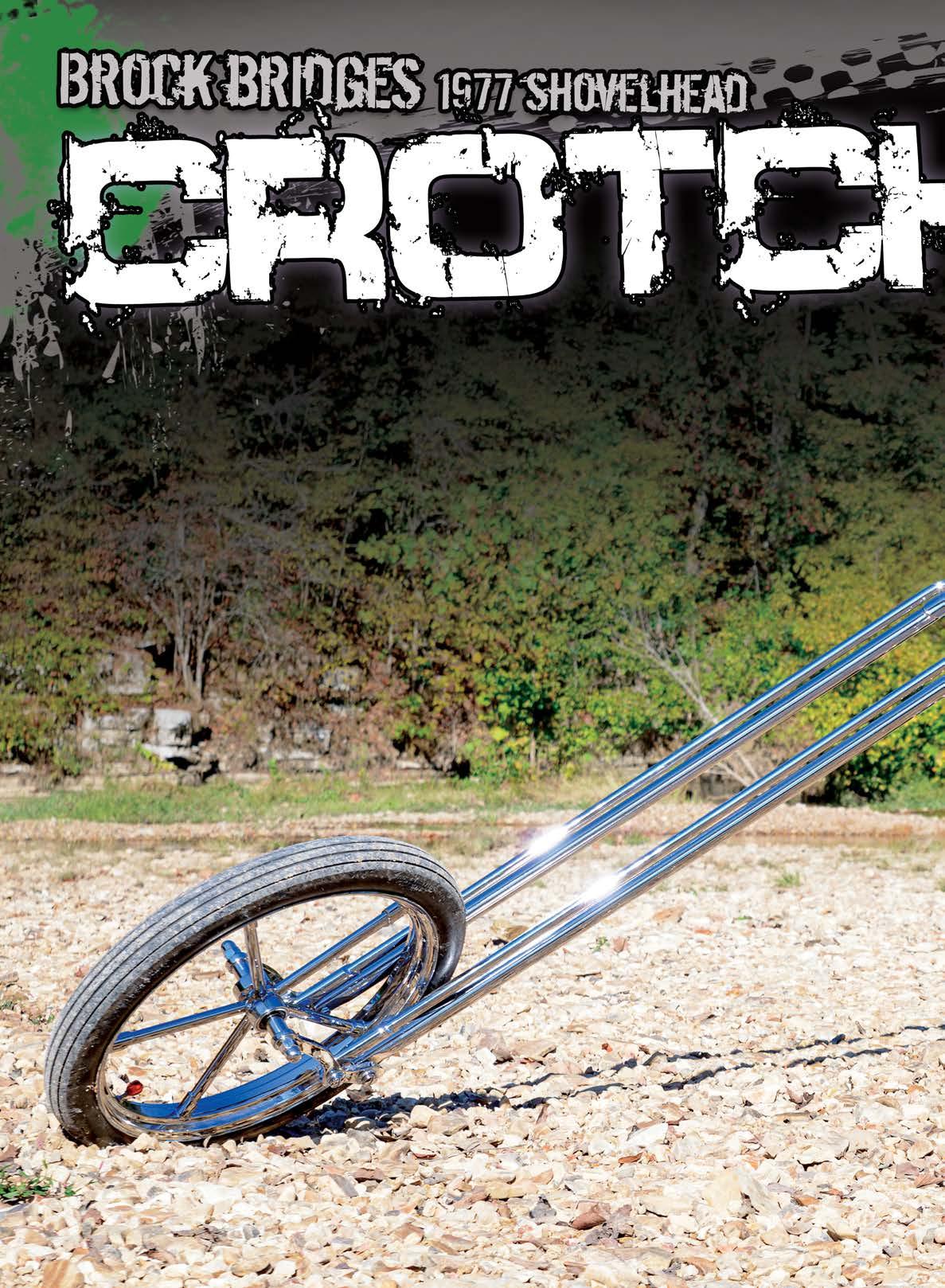
5 minute read
A Simple Introduction To Vapor Honing

Article And Photos By: Jason Hallman www.cyclestopusa.com
Advertisement
or over two decades, Cycle Source Magazine has championed the art of restoring and customizing motorcycles. In the F annals of this highly regarded publication are words from some of the best known and most respected motorcycle craftsman, mechanics, and customizers. Each of us has our OWN way of doing things that either makes us unique or talented (or crazy), which helps us get our jobs done.
Craftsmen are always looking out for a new way to skin an old cat. Some of us, and some of you, have already made our minds up about how to do “this” or “that.” It is usually because we have made enough bad decisions in our past, and we know better today, or at least In 2019 I completed a project that was a decade in the making due to several reasons, the owner of the bike we were building lives in the United Kingdom. We agreed to build on the bike each time he visited. I told you all of that so I could tell you this: no sooner did we arrive back in Lakeland, Florida did Tik Tok call and inform yours truly, that we were to start another build. This time he wanted to defer the heavy lifting to me, and we would cut the build time down to a year or so if possible. He also inquired as to



my knowledge of a process called Vapor Honing. I hadn’t heard of it, so off to the inter-webs, I went! Vapor Honing is a fairly simple concept. This process is similar to bead blasting or sandblasting in a similar (looking) cabinet. After searching and searching, I went with a company called Vapor Honing Technologies. VHT (as I will now refer to them to cut down my total overall word count for editing purposes) is based in North Carolina. They have a wide array of machines that run the gamut from hobbyist cabinets to professional level cabinets suitable for production work. I have to say this on the front; their customer service is phenomenal. Since my purchase, I have referred several friends to them for purchase, and each one of them has reported back the same. All of their questions were answered in a timely fashion, and each of them now owns a machine that fits their needs, not the needs of the salesman on the line.
Enough wordplay, now for the main course. While vapor honing (or vapor blasting as some call it) is a similar process to sand (or bead) blasting, there is a very different outcome that you can tailor to meet your exacting needs. It is also a very venerable process in that it is useful on many different materials. You can actually vapor hone plastic to clean it and return it to like-new condition or use it on cast iron to achieve a restorative finish for that OEM automotive or motorcycle look. It is useful on aluminum cases and finish parts to “peen” the metal’s outer surface before plating or polishing the metal surfaces. I have even used it on chrome. uses. Depending on the size of the cabinet you invest in, you can vapor hone almost anything without damaging the part, depending on the Here is how vapor honing works vs. conventional sandblasting processes. When you sandblast or vapor hone a part, you are actually altering the surface structure of the parts you blast. Suppose you have ever sandblasted a part and found that you have used too aggressive of a material. In that case, you know that you can actually damage that part. The same holds true for vapor honing. The difference is in just how you alter the surface of the metal. When you sandblast a part’s surface, you [usually] remove about 4 mils from the overall structure surface. It also “rips” the metal surface to promote adhesion for things like paint and powder coating. Now 4 mils doesn’t sound like much but imagine, a 70-year-old Knucklehead case that has been bead blasted a half-a-dozen times over the years. Removing 4 mils from the surface each time can create a problematic fit upon reassembly, and since we are all aware of the value of these coveted engines nowadays…you can’t just add mil thickness in a situation like that. This is one way that vapor honing is a winner when you are restoring a prized motorcycle engine like a Knucklehead, Panhead, or even a Shovelhead engine.
The wet media, called a “Slurry.” vapor honing only removes [on average] 2 mils from most metals’ surface. Also, instead of exposing the metal molecules to promote adhesion for paint or powder coating, the metal molecules are “peened” closed, which promotes a unique surface that looks “fresh out the box” even on a 70-year-old set of engine cases. When you close the surface molecules of metal, you also limit stains from things like oil and gasoline. Cycle


Stop USA currently has the VH1000 stainless steel cabinet but recently received VHT’s latest hobbyist machine. I cannot wait to add this to our lineup. We use our machine daily, and having this second machine will be a godsend as we will no longer have to change media mid-project. Watch out for a full write up on the unboxing and set up of this machine in the next issue. If you are on the fence about the process…send me your part, and I’ll show you the difference this tool can make in your final project outcome. If you would like a machine of your own, contact my friends over at Vapor Honing Technologies and tell them that I sent you. You will not be disappointed.
Sources: Cycle Stop USA Lakeland Florida 813-754-2959 www.cyclestopusa.com
Vapor Honing Technologies 313A Motz Avenue Lincolnton, North Carolina 28092 828-202-5563 www.vaporhoningtechnologies.com
















